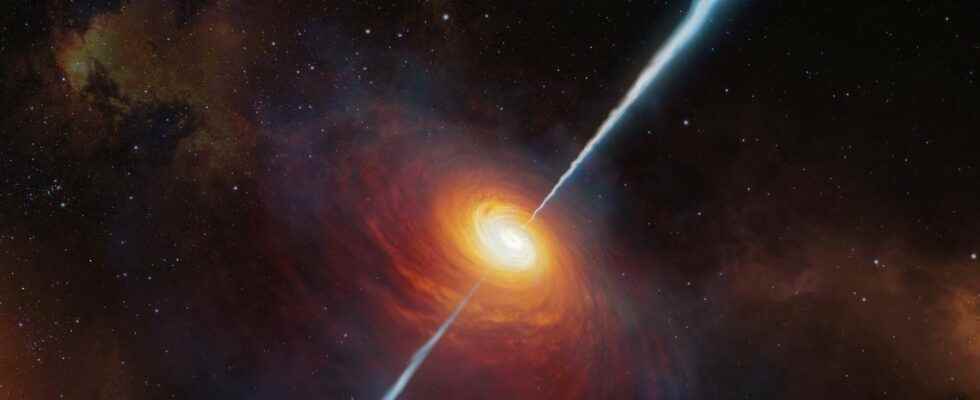Observing in wavelengths other than those of the visible has enabled astronomy and astrophysics to make unprecedented discoveries. We have just had a new proof with the highlighting of jets whose lengths exceed one million light-years and which are emitted by an elliptical galaxy close to the Local Group. These supermassive black hole jets are among the longest known.
You will also be interested
[EN VIDÉO] 20 years of Futura with Françoise Combes 2021 is the year of Futura’s 20th anniversary! On this great occasion, we asked our sponsors to express themselves on the subject… Françoise Combes notably lent herself to the exercise and gives us her analysis as an astrophysicist on the past, but also on the next 20 years.
The Askap (Australian Square Kilometer Array Pathfinder) is a network of radio telescopeslocated in Western Australia at the Murchison Radio Astronomy Observatory (MRO). It is made up of several dozen identical parabolic antennas 12 meters wide which all work together according to the principle of aperture synthesis. It is a method ofinterferometry which makes it possible to combine the observations of several telescopes artificially to obtain the virtual equivalent of a very large instrument, for example that of the Earth or of the Earth-Moon system as seen respectively with theEvent Horizon Telescope and RadioAstron.
The Askap served as a prototype for a much more ambitious project still underway in 2022, the Square Kilometer Array (abbreviated SKA, in French “Network of a square kilometer”) which will be the equivalent of a giant radio telescope of one square kilometer. Consisting of several interferometric networks in metric and centimetric wavelengths, it is deployed on two sites in South Africa and Australia.
A presentation of the SKA and ASKAP. To obtain a fairly accurate French translation, click on the white rectangle at the bottom right. The English subtitles should then appear. Then click on the nut to the right of the rectangle, then on “Subtitles” and finally on “Translate automatically”. Choose “French”. © Dept. of Industry, Science and Resources
A jet of matter 50 times the size of its parent galaxy
A group of Australian radio astronomers from the Western Sydney University has just made known, in an article published by The Conversation, which they and their colleagues had discovered using ASKAP among the longest supermassive black hole jets ever revealed by instruments in the noosphere. They are associated with NGC 2663, a elliptical galaxy located in the constellation Compass only about 96 millionlight years of the Milky Way. She had been discovered by theastronomer American Lewis Swift in 1886 and then and even for decades afterwards, despite its proximity to the Local Group of galaxies (recall that The Local Group of galaxies or, more simply, the Local Group is the group of more than 60 galaxies to which the Milky Way belongs, the diameter of which is approximately 10 million light-years), none of the means observation in the visible had not made it possible to highlight these jets.
The discovery is exposed with all the necessary scientific details in an open access article on arXiv where we learn that in addition to observations in the field radioobservations in the field of X-rays with satellites like Chandra and Spektr-RG were used in the project Evolutionary Map of the Universe (EMU) by the team led by Velibor Velović, doctoral student at the Western Sydney University.
NGC2663 is a typical elliptical galaxy with about 10 times morestars that the Milky Way and the jet of matter observed in the radio domain is 50 times larger than it, that is, over a length of more than a million light-years, so that if it could be seen in the visible ateye naked, given the proximity of this galaxy, it would appear larger than the Moon on the celestial vault.
Roger Blandford tells us about supermassive black holes and their jets in this video. To obtain a fairly accurate French translation, click on the white rectangle at the bottom right. The English subtitles should then appear. Then click on the nut to the right of the rectangle, then on “Subtitles” and finally on “Translate automatically”. Choose “French”. © Quanta Magazine
Interested in what you just read?
